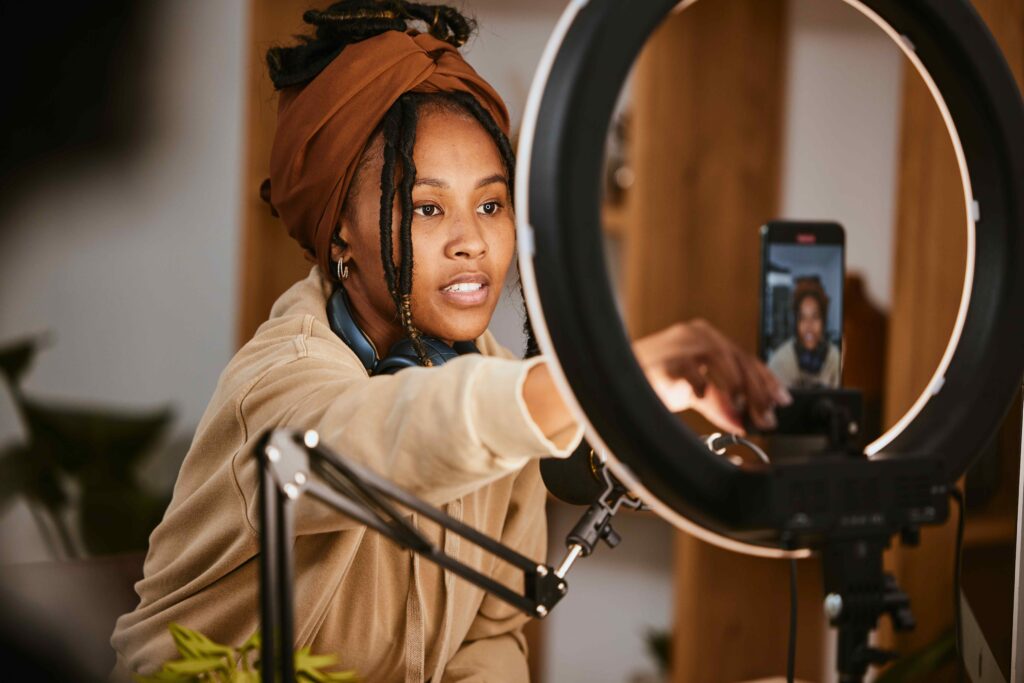For many African freelancers, the challenge isn’t just finding work; it’s proving to potential clients that you’re worth hiring over thousands of others offering the same service. You might have the skills, the dedication, and the results to back them up, but in a crowded market, that’s not always enough. Clients won’t automatically know your value; you have to show it. That’s where your personal brand comes in. It’s the story you tell through your work, your online presence, and the content you share. It’s about positioning yourself in a way that makes clients notice, choose, and remember you.
The good news is, building a personal brand doesn’t require a big marketing budget or expensive ads. We’ll walk through practical ways to use content to strengthen your personal brand as an African freelancer
What is a Personal Brand?
Before you can build your personal brand, you need to be clear on what it is. Many freelancers think a personal brand is just a professional headshot and a polished LinkedIn profile. While those are part of it, your personal brand runs deeper. It’s the sum of your skills, your reputation, your values, and how you present them to the world.
Your personal brand is how people perceive you in your professional space. It’s the image and impression that remains in a client’s mind after they’ve read your bio, seen your work, or interacted with you online. For freelancers, it answers the question every client is silently asking: “Why should I trust you with my project instead of someone else?”
The Core Elements of a Personal Brand
- Expertise: Your proven skills and knowledge in a specific area.
- Consistency: The way you present yourself across all platforms and client interactions.
- Authenticity: Your unique voice, story, and values that make you relatable.
- Visibility: How easily potential clients can find and learn about you.
Why Content is the Key to Personal Branding
People don’t buy from strangers; they buy from people they know, like, and trust. Content is how you bridge that gap. It allows you to show your skills in action, share your perspective, and prove your value without sending a single cold pitch.
Content Builds Trust Before the First Conversation
When a potential client sees your article, video, or post solving a problem they care about, you instantly position yourself as a credible expert. By the time they reach out, they already have a sense of your abilities, work style, and professionalism, which makes the hiring decision easier.

Content Increases Your Visibility in the Right Circles
Relying on word-of-mouth alone can limit your reach. By creating content, you can tap into platforms like LinkedIn, Medium, YouTube, or niche online communities where your ideal clients spend time. This visibility is especially important for African freelancers competing in global markets.
Content Lets You Control Your Narrative
Without content, others define your professional identity based on a CV, a portfolio, or by assumptions. With content, you decide what skills to highlight, what stories to tell, and how to present your value in ways that resonate with your audience.
Content Keeps You Top of Mind
A single post can spark interest, but consistent content keeps you top of mind for your audience. Clients might not hire you immediately, but regular updates mean they’ll remember you when the right project comes up.
Steps to Build Your Personal Brand Through Content
Step 1: Identify Your Niche and Audience
You can’t build a strong personal brand if you’re speaking to everyone at once. The most successful freelancers focus on a specific niche and audience. This means knowing exactly what you’re best at, the industries you want to work in, and the type of clients who will benefit most from your skills. For instance, instead of being “a graphic designer for all businesses,” you might position yourself as “a brand designer for African e-commerce startups.” This clarity shapes your content and makes it easier for the right people to recognise you as the solution they need.
Step 2: Develop Your Brand Voice and Messaging
Your brand voice is the personality of your content. It’s how you sound and how you make your audience feel. Decide whether you want to come across as formal, approachable, witty, or authoritative, and keep that tone consistent across all your platforms. Alongside this, refine your brand messaging so it communicates what you do, who you help, and why you’re the right person for the job. When your voice and message are aligned, your audience will remember you for the right reasons.
Step 3: Choose the Right Content Formats
Not every format will suit your strengths or your audience’s habits. If you’re comfortable writing, blog posts, LinkedIn articles, and newsletters might be your best tools. If you work better visually, you could focus on Instagram carousels, infographics, or design showcases. Video content is also a powerful way to connect, whether through YouTube tutorials, Instagram Reels, or TikTok tips. The key is to start with one or two formats you can manage consistently, instead of trying to be everywhere at once.
Step 4: Create Valuable and Relevant Content
Your content should help your audience in some way: solving a problem, teaching a skill, or offering insight into your work process. A short behind-the-scenes look at how you tackled a client project can be just as effective as an in-depth tutorial, especially if it shows your thought process and expertise. When your audience gains something from your content, they begin to see you as a trusted resource rather than just another freelancer promoting their services.

Step 5: Be Consistent and Authentic
Personal brands are built over time through steady, genuine effort. It’s better to post less frequently but consistently than to post a lot for a month and then disappear. Share your genuine experiences, including both the wins and the lessons learned, because authenticity builds trust more quickly than a perfectly curated feed. Clients are more likely to connect with a freelancer who feels human and relatable than with one who seems distant or overly polished.
Step 6: Engage and Build Relationships
Publishing content is just the starting point; engagement turns it into a brand-building tool. Reply to comments, answer questions, and join conversations in your industry. Collaborate with other freelancers, contribute to discussions in relevant online communities, and show genuine interest in others’ work. Over time, this kind of relationship-building turns casual followers into a loyal audience and loyal audiences into paying clients.
Conclusion
Building a personal brand through content isn’t about chasing trends or trying to outshine everyone else. For African freelancers, a personal brand can be the difference between competing solely on price and attracting clients who see your true worth.
When you define your niche, refine your voice, create valuable content, and engage with your audience, you’re not just marketing yourself; you’re building a professional identity that works for you even when you’re not actively pitching. It’s a long-term investment, but one that pays off in visibility, credibility, and better opportunities.
So start where you are. Share one insight, post one example of your work, or tell one story about your journey. With consistency, those small steps will add up to a strong personal brand that speaks for you in rooms you haven’t even entered yet.
And if you’re ready to take your freelancing career further, explore more resources on AfricanFreelancers.com and connect with a community of professionals who understand the opportunities and challenges unique to freelancers on the continent.





